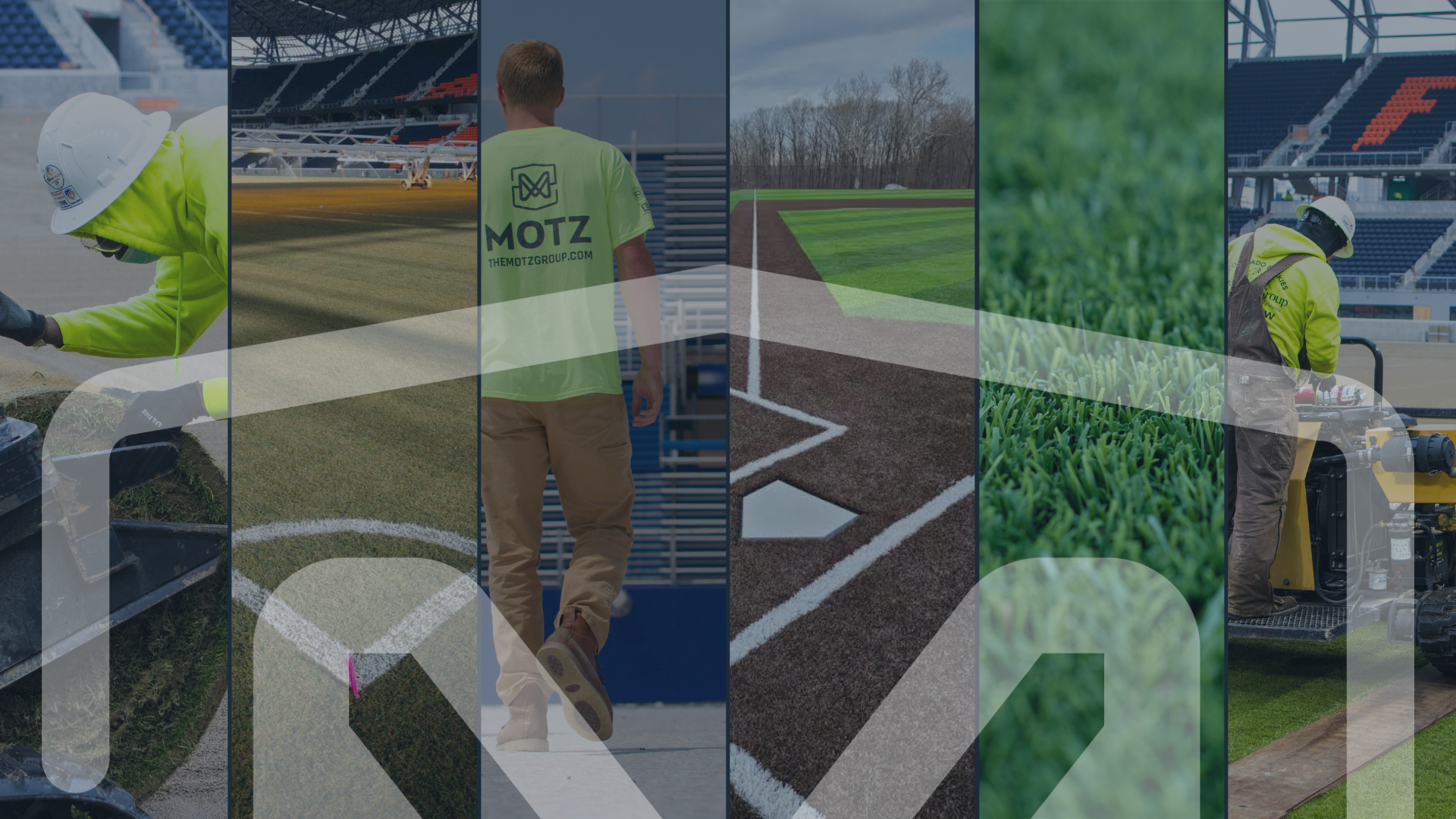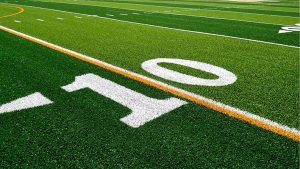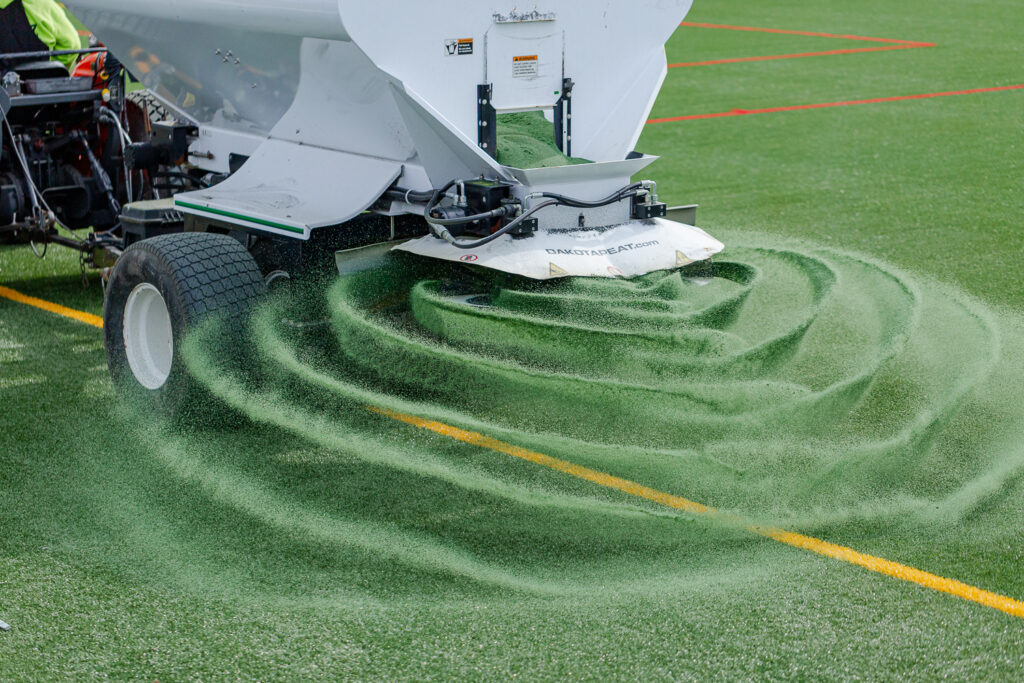
Sports Field Blog
Subscribe To Email Updates
Subscribe to our weekly newsletter and we’ll send updates straight to your inbox
7 Preseason Maintenance Tips To Prepare Your Synthetic Turf Football Field

In a few short months, your team will be back on the field, practicing every day to get ready for the upcoming football season. It’s an exciting time and a very rigorous one at that, not only for the players but for your field too.
Every year, preseason football comes and goes quickly, without much time to spare before regular season play. It’s important to make sure your field is player ready and has undergone proper turf maintenance as you look forward to a successful preseason.
If you’re wondering how best to maintain your synthetic turf football field and protect your athletes, we have a few maintenance tips to keep in mind to make sure you’re well equipped for the season.
Maintain Regular Grooming Practices
Routine synthetic turf maintenance and grooming will make it easier for you to keep your field in top condition. We recommend that synthetic turf systems have routine grooming after every 40 hours of use, or approximately every two weeks, to maintain the right infill depth and keep fibers in an upright position. Consistent grooming will keep your surface free from debris, as well as maintain optimal performance.
Check Your Field for Needed Repairs

Since athletes typically get off time between seasons, most teams haven’t experienced organized play in 5-6 months. That means your synthetic turf field needs a thorough check to make sure it’s ready to be played on.
Take some time to walk over the entire field and note any loose inlays, faded numbers, hash marks etc. You’ll also want to look out for any planarity issues, sinkholes, or low infill areas before letting your team practice on the field.
If you see anything that needs to be fixed, be sure to contact your field construction installation team for proper maintenance, file a warranty claim, or give us a call. We are here to help the field preparation process go as smoothly as possible.
Combat Heavy Wear and Tear
Football teams end up being quite extensive when you have multiple players for each position on the field. As a result of constant heavy foot traffic on the same parts of the field, turf can become thin and compact over time. To keep your synthetic turf football field working at optimal performance levels, make sure your team is utilizing all areas of the field during preseason practices. Change your running patterns or drill areas to keep foot traffic evenly distributed.
Make Sure Your Turf Football Field is Sanitized and Disinfected
Even though COVID-19 is becoming less and less of a concern, it’s still important to keep your field clean from bacteria and any other pesky microbes that might be present.
One simple way to keep your synthetic turf field sanitized is to apply a contact disinfectant spray to the turf. This will help fight off bacteria and pathogens that naturally develop during football season from things like sweat, cuts, wet equipment, etc.
Clean up Debris
With such a large team, it’s easy for trash, paper cups, tape, and other items to accumulate. Make sure your field is regularly cleaned for debris so it’s ready to be played on and clear for athletes.
Test Your Artificial Turf Surface

Player safety is top-of-mind with any sport, especially a high contact sport such as football with frequent tackles and ground interaction. We highly recommend testing your field’s surface before preseason for performance and safety to avoid potential concussions and other injuries. Here are a few tests to keep in mind as you prepare.
1. Shock Absorption
This is the measure of shock absorption percentage by a surface. If you have a lower score, it indicates that the surface is harder and is absorbing less of the impact. This means vibration from impact may travel back through the athlete’s legs. A higher score means that the surface is absorbing a higher amount of the shock, with less vibration traveling back to the athlete’s legs.
2. GMAX Testing
GMAX is a test that measures impact attenuation — the ability of the field surface to absorb “shock”, or kinetic energy — from a collision. The lower the GMAX rating, the more energy is absorbed by the surface. The higher the GMAX rating, the less energy is absorbed by the surface, which means more energy is felt by the player.
This test involves dropping a 20-lb, flat-ended missile akin to a torso or body part. GMAX scores should not exceed a score of 200 G’s according to ASTM or a score of 165 G’s according to the Synthetic Turf Council.
Get Your Field Looking Season Ready
As a part of preseason, you’ll want to make sure your field looks game ready. That might include adding temporary lines or logos on the turf surface. Before you begin, take a look at these tips so you don’t cause damage to the turf.
Make Your Preseason Football Prep Easy with Motz365
With Motz365 your field will be clean and ready for play. Our expert maintenance crew uses a 5-step program to address hazards, ensure the continued safety of your athletes, and improve the function, hygiene, and aesthetic of your synthetic turf sports field.
If you want to make sure your field is well cleaned from end zone to end zone, our Motz365 visits will give you an annual deep clean that takes care of debris on the field, as well as a contact disinfectant spray application.
With the Motz team, you’ll be well prepared for preseason and the upcoming regular season. Have confidence knowing your athletes are playing on a clean, safe surface that works for them — no matter where they are on the turf.
Similar Blogs



